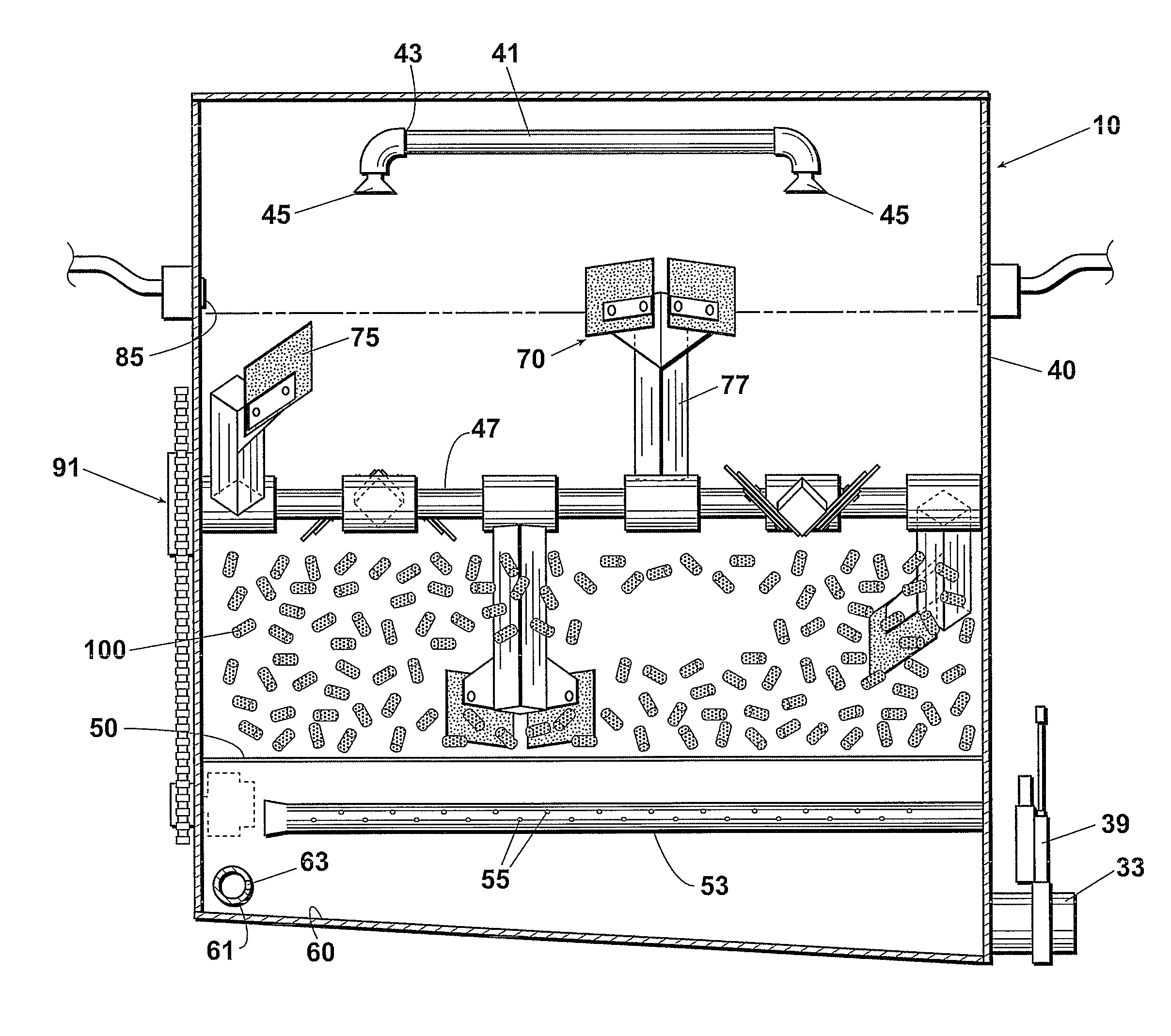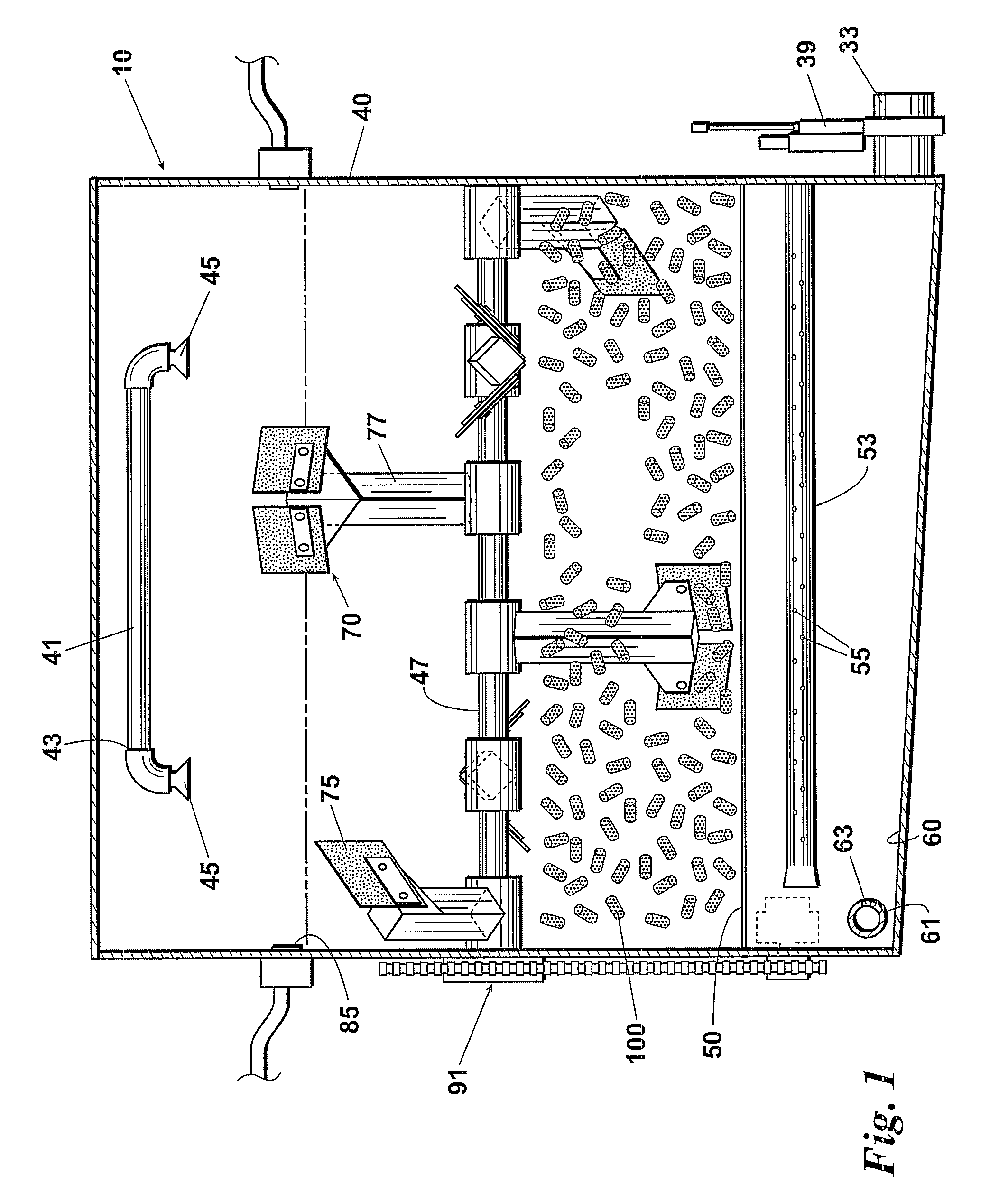Bio-Reactor System and Method for Composting Food Waste
a bioreactor and food waste technology, applied in bioreactors/fermenters, biomass after-treatment, products, etc., can solve the problems of foul odor, affecting the quality of food waste, and involving a rather long process, so as to achieve less odor, less odor, and convenient use.
- Summary
- Abstract
- Description
- Claims
- Application Information
AI Technical Summary
Benefits of technology
Problems solved by technology
Method used
Image
Examples
Embodiment Construction
[0054]Referring to FIGS. 1-9, a method for composting food waste includes the steps of adding a food waste to a bio-reactor 10 and cycling the food waste between a water cycle, an agitation cycle, and a rest cycle. A bio-reactor 10 made according to this invention and practicing the method disclosed herein can be sized to process between 400 to 2,400 pounds of garbage every day and turn it into water. Further, the bio-reactor 10 can be located near or at the point where the waste is generated. Additionally, the bio-reactor 10 can dispose of bio-compostable materials, including but not limited to plates, cups, cutlery and straws in the same manner.
[0055]The bio-reactor 10 uses low temperature aerobic composting to control odor and contains a plurality of black plastic media chips (“biochips”) 100 that provide high surface area for harboring and growing micro-organisms useful in decomposing the food waste added to the drum 40 located in the interior of the housing 20 of the bio-reacto...
PUM
| Property | Measurement | Unit |
|---|---|---|
| angle | aaaaa | aaaaa |
| time | aaaaa | aaaaa |
| time | aaaaa | aaaaa |
Abstract
Description
Claims
Application Information
 Login to View More
Login to View More - R&D
- Intellectual Property
- Life Sciences
- Materials
- Tech Scout
- Unparalleled Data Quality
- Higher Quality Content
- 60% Fewer Hallucinations
Browse by: Latest US Patents, China's latest patents, Technical Efficacy Thesaurus, Application Domain, Technology Topic, Popular Technical Reports.
© 2025 PatSnap. All rights reserved.Legal|Privacy policy|Modern Slavery Act Transparency Statement|Sitemap|About US| Contact US: help@patsnap.com



